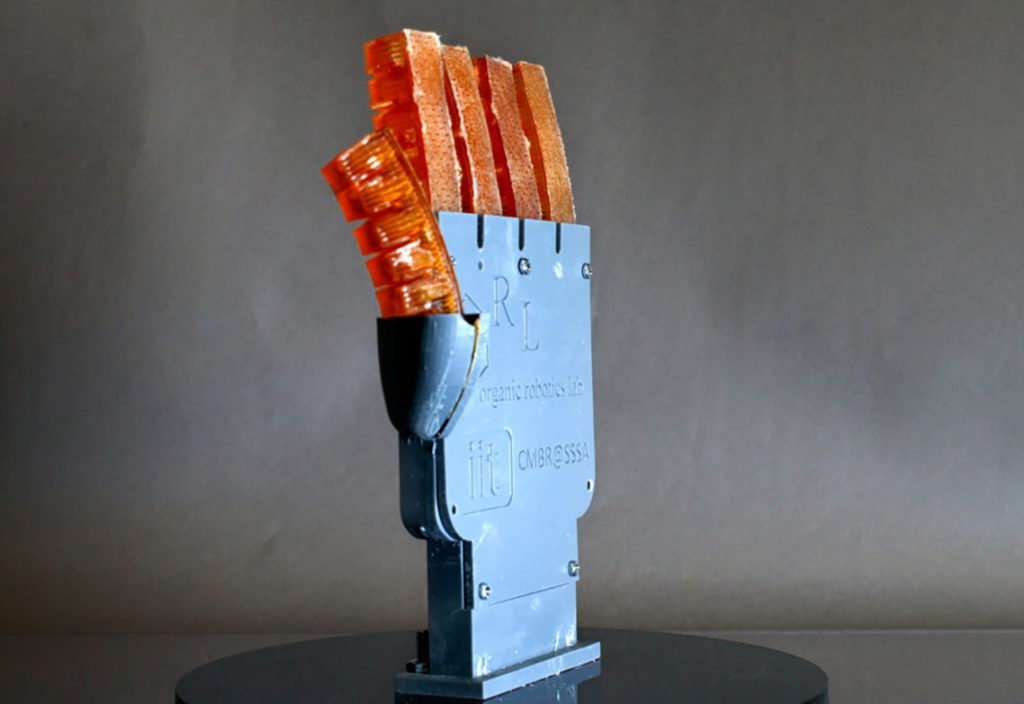This robot’s soft, hydraulically controlled fingers release water to regulate their temperature.
When humans – among other mammals – need to cool down, their bodies excrete moisture in the form of sweat. Now, robots can do the same.
A team of engineers from Cornell University has created a soft robot that manages its internal temperature by dilating micron-sized “pores”, releasing water when its base layer made of poly-N-isopropylacrylamide reaches temperatures above 30 degrees Celsius.
When the water evaporates, the robot’s surface temperature drops by 21 degrees Celsius in 30 seconds.
“Our contribution is the making of mixtures of nanoparticles and polymeric materials that basically allow us to control the viscosity, or flow, of these fluids,” said Emmanuel Giannellis, Cornell’s Walter R. Read Professor of Engineering.
The technology is particularly useful for soft robots because, unlike hard metal devices, they do not dissipate heat quickly. The robot’s pores were made using multi-material tereolithogaphy, a 3D-printing technique that shapes resin by using light.
One disadvantage of the technology is that it can hinder a robot’s mobility, said Cornell Associate Professor of Mechanical and Aerospace Engineering, Rob Shepherd, who led the project. There is also a need for the robots to replenish their water supply, which has led Shepherd to envision soft robots that will someday not only perspire like mammals, but drink like them, too.
The ability of a robot to secrete fluids could also lead to methods for absorbing nutrients, catalysing reactions, removing contaminants and coating the robot’s surface with a protective layer.
“I think that the future of making these more biologically analogous materials and robots is going to rely on the material composition,” Shepherd said.
“This brings up a point [about the importance of] multidisciplinary research in this area, where really no one group has all the answers.”
This article originally appeared as “Sweaty robot” in the April 2020 issue of create magazine.

